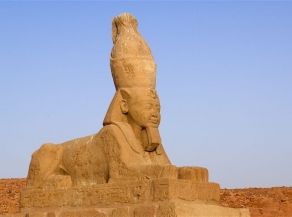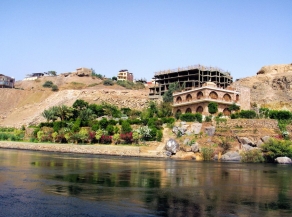

Apr 01, 2021
Sakkara Step Pyramid
Sakkara Step Pyramid: Situated 19 miles (30 kilometers) south of Cairo, Sakkara (also spelled Saqqara or Saqqarah ) is a massive site which, along with Dashur; Abu Sir; Zawyet El Aryan; Giza; and Abu Rawash, forms what is commonly known as the Memphite Necropolis. Sakkara is, by far, the largest of these pyramid sites, covering a 4.3 mile by 0.93 miles 7 kilometers by 1.5 kilometers) area and housing 17 pyramids, as well as numerous temples, tombs, mastabas, and the Serapeum.
When most people think of Sakkara Step Pyramid the first thing that comes to their mind is the 3rd Dynasty Step Pyramid of Djoser (also spelled as Zoser or Djeser) and this is because he was the pharaoh that built the world’s first stone building, and complex, designed by his vizier; Imhotep. It stands 203 feet tall (62 meters) and has a base that measures 358 feet by 410 feet (109 meters by 125 meters), but it is obvious, by its design, that it was not initially planned to be a pyramid. It appears that King Djoser’s burial site was originally intended to be a mastaba (which means bench), just as his predecessors had used for their burials, but Imhotep decided to improve on this and so built another mastaba on top of the first, followed by another mastaba, which did mean changing the shape of the base, and he continued doing this until it reached the six levels that can clearly be seen nowadays.
As well as being the home for so many pyramids, Sakkara Step Pyramid also boasts many fantastic mastabas (tombs) and one of these is the largest ever found in Egypt: the Mastaba of Mereruka (bottom picture, above). Situated just a few meters from the Pyramid of Teti, to whom Mereruka was vizier, this mastaba has 33 rooms and some phenomenal reliefs, including one that shows ancient Egyptians making wine.
Recently reopened, the Serapeum is home to the sarcophagi of many (25) of the Apis Bulls and dates back to the reign of Amenhotep III. The Apis Bulls were worshipped throughout the New Kingdom as they were believed to be the live manifestations of the god Ptah.
A modern museum has recently been opened at the entrance to the Sakkara Step Pyramid site, which was named after the designer and architect of Djoser’s Step Pyramid: Imhotep. This museum exhibits most of the finds discovered at the site as well as showing the visitor the vastness of this massive field of pyramids.


